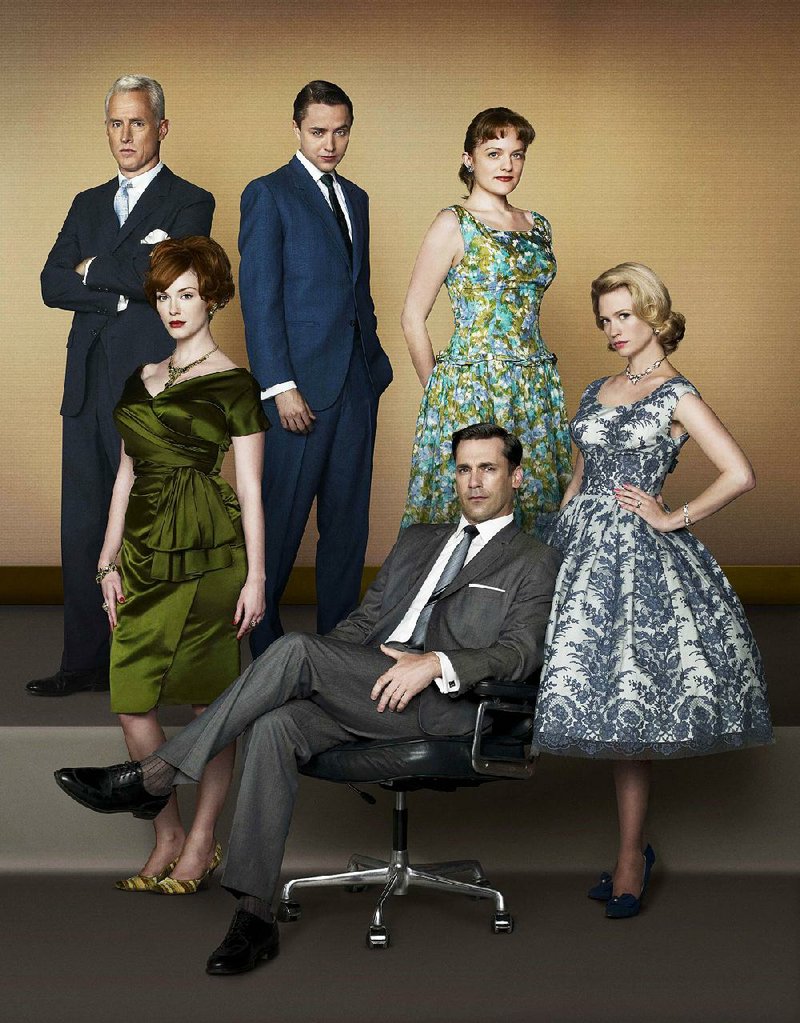And so, farewell to Mad Men. Farewell to the blogs and fan sites that tracked the story line (and more importantly, the outfits) of each episode.
Farewell to Don and his perfect suits, to Peggy and her plaids, to Joan and her jewel tones and sheaths.
Viewers everywhere are still in mourning, at least judging by the Twitterati.
I, however, am not among them.
Not because I am happy to see the end of what was one of television's smartest series, a pioneer of what is now generally accepted as the current golden age of small-screen serials.
But because I can't help but hope that with the end of Mad Men comes the end of a period in fashion that has seen designers become trapped in the past to an almost stifling degree. At least the past as it looked in the 1960s (which in the beginning, let us not forget, looked a lot like the late 1950s) and early '70s.
Even for an industry that generally views history as a grab bag of potential inspiration to be dipped into and mixed and matched at will, this has been extreme.
For as long as the show has been running -- ever since its debut in 2007 -- we have been, it seems, suffering from what Hadley Freeman in The Guardian newspaper dubbed "madmenalaria."
She defined the term as "the desire to dress like a character from Mad Men," though I would revise that and call it the mass fashion conviction that all consumers want to dress like characters from Mad Men. The show's visual impact was so intense, it went viral and seemed to recode designers' creative DNA.
It was apparent not just in obvious brand extensions, like Banana Republic's Mad Men collection (designed in collaboration with the show's costume supremo, Janie Bryant), but in more pervasive, unspoken ways: in silhouette and print; in hemline and seam. And in the clear belief, visible on catwalks everywhere, that the 1960s were the answer to every moment of pallid inspiration, or aesthetic doubt.
It was visible, for example, on many of Frida Giannini's Gucci runways, including the tablecloth shades and A-line shapes of leathers for autumn-winter 2014; the pastel tunics and ruffled hostess dresses of spring-summer 2013; the bright Beatle trouser suits and caftans of spring-summer 2009.
It was there in Rossella Jardini's Moschino, from the bows and bouffants of spring-summer 2009 to the Mary Quant-inspired spring 2013 collection.
It was in Giambattista Valli's most recent autumn-winter show, full of puffed-sleeve printed tunics over matching trousers and drop-waisted schoolgirl shifts, and in MaxMara's ode to Marilyn Monroe's 1962 photo shoot with George Barris.
It was visible in practically every brand that edged from the 1960s to 1970s for the season currently in stores, including Alberta Ferretti, Pucci and Etro.
I like a miniskirt and maxi-dress as much as the next woman; they are, generally, flattering and easy to wear. And there's no question that seeing them on Megan and Co. was a potent reminder.
But this has begun to feel less like a relevant statement about what women want now and more like a retreat; an assumption, which I would characterize as false, that the past is a safe place to dress.
Yet if Mad Men showed us anything (besides how cool a skinny suit could look, and that wide ties really were not a good menswear moment), it is that the decade chronicled was a complicated, often unhappy, occasionally destructive time.
The show was a potent reminder that the sexual revolution and women entering the workforce and the rise of consumerism and the Age of Aquarius (all that) had a dark side, and claimed their victims. That's part of why it was such a powerful show.
The clothes had resonance because the characters who wore them were intricate and multidimensional, not just because Joan's brocade sheath was really glamorous, or Megan's psychedelic chiffons made Pucci feel cool.
But that kind of emotional identification gets lost on the runway, and the retail floor. And then we are left with what?
Form without content. Which is why devolving to such familiar forms seems like a safe bet, and why it really isn't. It's empty and disposable -- which is in turn why the 1960s keep being identified as a "trend," with the associated implication that at some point they will also be identified as "over." Even though that "over" has yet to come.
But perhaps we are finally there. Perhaps the curtain had to fall on the show before it could fall on that part of the ready-to-wear shows. Perhaps the history hamster wheel that we seem to be on -- which has seen us cycle through the 1970s as well as some of the big hair and bigger shoulder pads of the 1980s (yes, we are there again) -- will finally stop turning.
After all, during the last round of collections, the most striking pieces -- from Louis Vuitton, Dior, Proenza Schouler, Narciso Rodriguez -- had a streamlined momentum that wasn't dragged down by any decade-related reference, or identity. They were clothes that went striding into the future, freed from the weight of the past.
Isn't that what we all want? Don Draper would have understood.
Style on 06/02/2015
